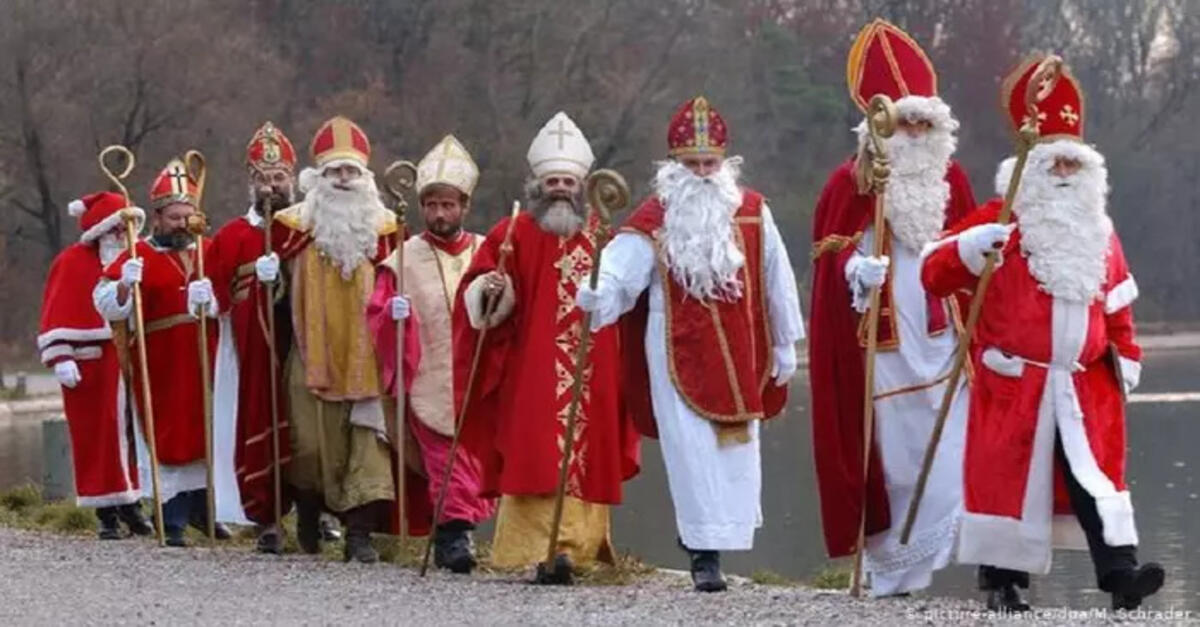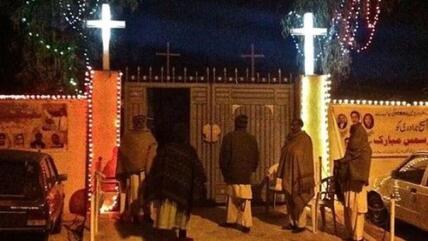Questions and answers about St. Nicholas

Nicholas is one of the most revered saints in Christianity. In the Catholic Church, he is often invoked as an "emergency helper", while Orthodox Christians refer to him as a "miracle worker". As far as the historical person is concerned, there is much to suggest that the figure created by the legends originates from the conflation of two historical figures. The older Nicholas was Bishop of Myra in Lycia in Asia Minor (today Demre near Antalya on the Turkish Mediterranean coast) in the fourth century and is said to have died on 6 December. The second Nicholas from the 6th century was a monk who first became abbot in Sion and later bishop of Pinora (also in Asia Minor). Both were venerated early on as benefactors.
What legends have grown up around St Nicholas?
One of the best known is that of a poor man who was about to prostitute his three daughters in order to somehow survive. To prevent this, St Nicholas is said to have thrown three lumps of gold through the window or down the chimney, where they fell directly into socks that had been hung out to dry. Another legend tells that St Nicholas saved the city of Myra from famine and worse. Pirates had captured all the grain ships and demanded the city's children as slaves because the inhabitants could not raise enough ransom money. St Nicholas offered up the church treasures, thus saving the children. In other stories, St Nicholas brought three murdered schoolchildren back to life and saved sailors from shipwreck.
What is the story behind the saint's bones?
Bishop Nicholas was buried in Myra in the middle of the 4th century. Merchants from Bari are said to have brought his remains from the episcopal city to their Italian homeland in 1087, allegedly to save them from being plundered by Turkish Muslims. Since then, the relics have been kept in Bari in the specially built Basilica of St Nicholas. Some were exhibited in Moscow and St Petersburg in 2017, attracting a total of almost 2.5 million pilgrims. In October of the same year, however, Turkish archaeologists reported that they had discovered the tomb of St Nicholas beneath the Church of St Nicholas in what is now Demre.

In harmony with the Muslim community
Just like all Christians in Islamabad, 45-year-old Akram and his family celebrate "the night of the new moon" also known as "chand raat", every year on 24 December. Nusrat Sheikh joined him
Why gifts?
St Nicholas has always been regarded as the patron saint of children. In the Middle Ages, the custom developed of a man dressed as St Nicholas visiting families, rewarding well-behaved children and punishing naughty ones. The saint often left this task to his companion, who was called something different depending on the region, such as Knecht Ruprecht, Krampus, Pelzmärtl, Hans Muff or – in the Netherlands – the "Zwarte Piet". The children sometimes had to recite poems and prayers to receive a gift. It was Martin Luther who, as part of his criticism of the veneration of saints, made Jesus' birthday a day of giving and had the Christ Child bring the presents. To this day, however, the custom of St Nicholas filling socks and shoes with sweets and small gifts on his feast day on 6 December persists.
For whom is St Nicholas the patron saint?
He is particularly honoured as the patron saint of children and schoolchildren as well as sailors, merchants and bakers. But he is also considered the patron saint of fishermen, pharmacists and even thieves and robbers. In recent years, there has also been a proposal to make him the patron saint of Europe, as he is equally revered in both East and West.
Which names are derived from St Nicholas?
The popularity of St Nicholas can be seen not only in the fact that many first names such as Nikolaus, Klaus, Klaas, Nicole or Nicola can be traced back to the saint, but also in many German-language surnames such as Nickel, Claassen, Clausen, Nikolaus, Klaus, Nietzsche, Klaas or Klose.
And what does he have to do with Father Christmas?
Not much really – apart from the fact that he probably came to America as the Dutch "Sinterklaas" and became the model for Father Christmas in advertising there as "Santa Claus". In recent years, church organisations have launched various initiatives to promote the memory of the saint and distinguish him from the Father Christmas of advertising. Chocolate Santas with mitre and crozier are also sold as an alternative to Father Christmases with cap and bag. From the church's point of view, the consumer-oriented Father Christmas of the gift industry has nothing to do with Bishop Nicholas, who selflessly helped people in need and who stands for Christian values such as altruism and charity. (KNA)